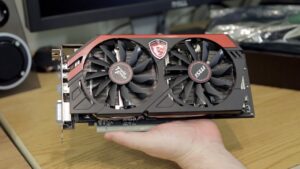It took AMD some time to fully transition its original GCN GPUs from the HD 7000 series to the new family. Moreover, it also includes Hawaii-based cards. But this review concludes our examination of the AMD Radeon R7 and R9 200-series cards, ranging from the R7 260X to the mighty R9 295X2. Although the R9 280 (a reworked HD 7950 Boost) was quietly announced a while ago. The stock has only recently begun to arrive at retailers. The lowest price we’ve found is £175, but with the R9 280X hovering around £200. Also, even £190 in a few places, it’s reasonably priced in comparison to existing SKUs. The GTX 760 is Nvidia’s main rival, and it costs around £165.
Memory
We were given the XFX Double Dissipation Edition, which is also the cheapest R9 280 on the market as far as we can tell – always a good place to start. The DD Black Edition, which is similar to the DD but has overclocked core and memory, is also available from XFX. Don’t worry if your power supply unit (PSU) is lacking in available connectors; we’ve included a dual Molex to 6-pin PCI-E power adaptor as well as a dual 6-pin PCI-E power to single 8-pin PCI-E power adaptor to assist you in getting everything wired up.
Because of the matt black finish on the plastic shroud and the chrome trim around the sides and edges of the fan cutouts. The cooler card is reasonably fashionable. The shroud, as seen, is not completely sealed, allowing you to see the heatsink inside. The power connectors are accessible via a cutout along the card’s top edge.

Is it a worthwhile investment?
In this chart, the AMD Radeon R9 280 is compared to the most popular Graphics Cards. Yellow components with high-performance levels are the most cost-effective option (green). The greater the overlap between the yellow and green bars, the higher the value.
Processor GPU
The R9 280, is a refresh of the HD 7950 Boost. It has a 28nm Tahiti Pro2 GPU with 2.3 billion transistors and a die size of 352 mm2. The GPU’s 28 Compute Units provide 1,792 active cores and 112 texture units, with 32 ROPs supplementing them. The core boost speed of the R9 280 is 933MHz, which is slightly faster than the 925MHz of the HD 7950 Boost.
Six 64-bit memory controllers connect the GPU to a 3GB GDDR5 frame buffer via a 384-bit memory interface. The HD 7950 Boost retains its clock speed of 1.25GHz (5GHz effective), giving it a maximum memory bandwidth of 240GB/sec.
Because AMD never sampled the AMD Radeon r9 280, there does not appear to be a strict reference design; instead, custom PCBs and minor variations in power delivery and video outputs are to be expected. Proceed with caution if you’re looking for a full-coverage water block. Unlike the original HD 7950 Boost, which had only two 6-pin plugs. XFX has chosen a 6-pin/8-pin PCI-E power plug configuration.

Performance
All of our cards have been tested in Windows 8.1 Update 1 with the most recent updates and patches installed. In our tests, we used a Gigabyte Z87X-D3H motherboard, an Intel Core i7-4770K central processing unit (CPU; $199.99 on Amazon; Opens in a new window), and 8 GB of DDR3-2133 memory. We always tested at a resolution of 1,920 x 1,080 with maximum graphics settings.
Conclusion
The AMD Radeon r9 280 Direct CU II midrange graphics card is powerful enough. Also for intense 1080p gaming while remaining almost silent.
Also read: Read The Best AMD Radeon HD 6950 Review
